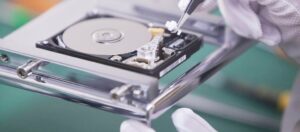Data Recovery from External Devices – USB Drives, Memory Cards, and More
Data recovery from external devices such as USB drives, memory cards, and other storage media can be a crucial process for retrieving lost or accidentally deleted information. External storage devices are commonly used due to their portability and convenience, but they are not immune to data loss caused by various issues, including accidental deletion, formatting errors, physical damage, or file system corruption. When attempting to recover data, it is essential to understand the methods and tools available to maximize the chances of successful recovery. One of the first steps in data recovery is to stop using the affected device immediately. Continued use can lead to overwriting of the lost data, making recovery more difficult or even impossible. For devices like USB drives and memory cards, which are often used in cameras or other portable devices, it is also advisable to avoid connecting the device to multiple systems, as each connection can increase the risk of overwriting. The data recovery process typically begins with identifying the type of storage media and the nature of the problem.

For instance, if the issue is due to accidental file deletion, the data might still be present on the device but marked as deleted and not accessible through normal means. In such cases, file recovery software can scan the device for recoverable files. Popular data recovery tools, such as Recover, Ease US Data Recovery Wizard, and Disk Drill, offer various features that allow users to scan the drive, preview recoverable files, and restore them to a different location. If the external device has been physically damaged, such as from water exposure or mechanical failure, the recovery process becomes more complex. In these situations, professional data recovery services may be required. These services often have specialized equipment and expertise to handle delicate and intricate recovery processes. They can perform tasks such as repairing damaged circuit boards, recovering data from physically damaged platters, or extracting data from chips.
File system corruption is another common issue that can lead to data loss CyberSecurity Service. External drives can become corrupted due to improper ejection, power failures, or malware infections. In such cases, the device may be recognized by the system but may not display its contents correctly. Using file system repair tools, such as CHKDSK for Windows or Disk Utility for macOS, can sometimes repair the file system and restore access to the data. However, if these tools are unsuccessful, more advanced recovery techniques, such as using data recovery software or professional services, may be necessary. It is also essential to maintain regular backups of important data to prevent loss. Utilizing cloud storage solutions, external hard drives, or network-attached storage can provide additional layers of protection and reduce the impact of data loss incidents. Implementing a robust backup strategy ensures that even if data recovery from external devices becomes necessary, there will be recent copies of the important files available.
